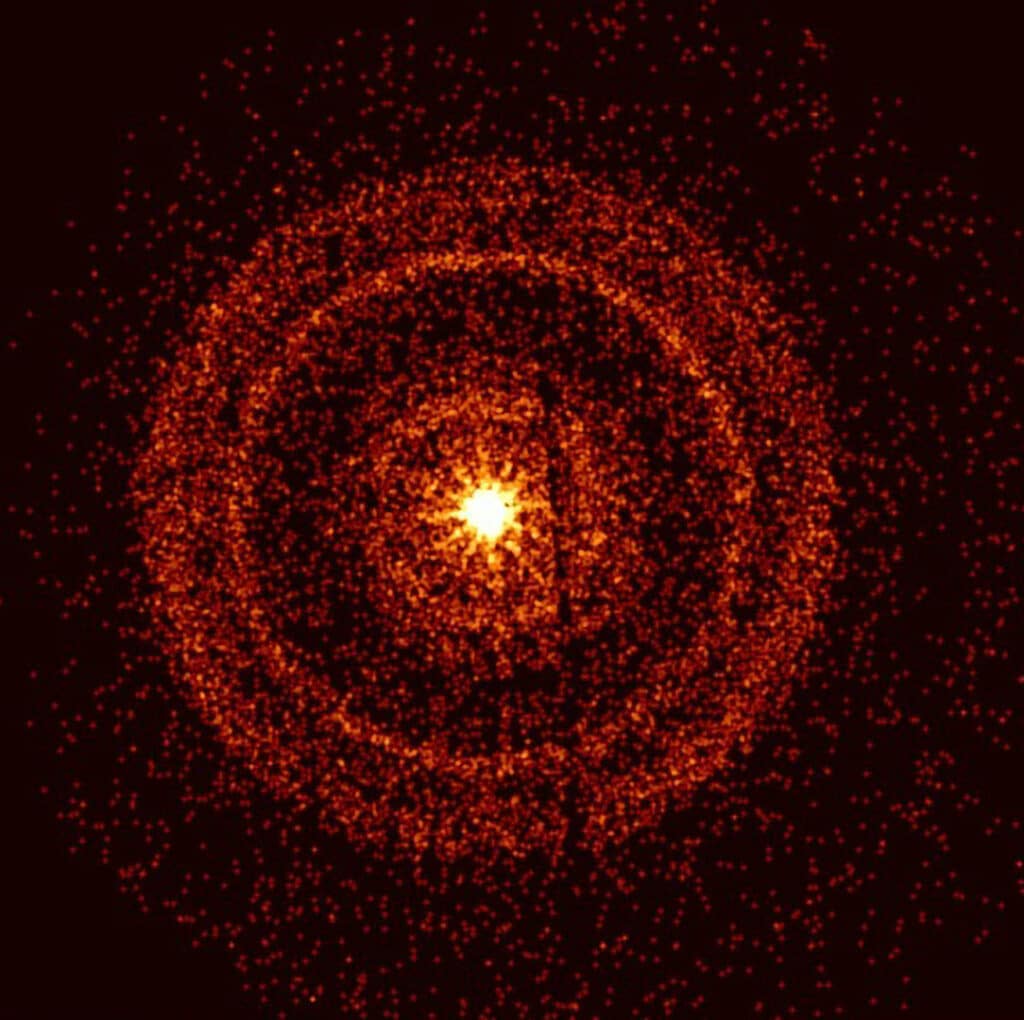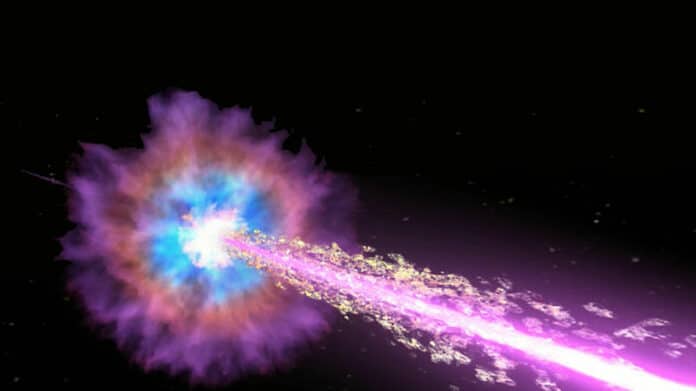An unusually bright and prolonged pulse of high-energy radiation that passed over Earth on Sunday, October 9, has enthralled astronomers worldwide. The emission originated from a gamma-ray burst (GRB), the most potent class of cosmos explosions, among the brightest events ever recorded.
The explosion, known as GRB 221009A, gave the 10th Fermi Symposium, a gathering of gamma-ray astronomers currently taking place in Johannesburg, South Africa, an unexpectedly exhilarating start. The signal, originating from the direction of the constellation Sagitta, had traveled an estimated 1.9 billion years to reach Earth.
On Sunday Eastern time, a wave of X-rays and gamma rays passed through the solar system, triggering detectors aboard NASA’s Fermi Gamma-ray Space Telescope, Neil Gehrels Swift Observatory, and Wind spacecraft, as well as others. Telescopes worldwide turned to the site to study the aftermath, and new observations continue.
It is believed by astronomers to be the first cry of a brand-new black hole that emerged in the center of a massive star collapsing under its weight. In these conditions, a developing black hole generates strong jets of particles moving close to the speed of light. As the jets fly into space and puncture through the star, they produce X-rays and gamma rays.

The burst also provided a long-awaited inaugural observing opportunity for a link between two experiments on the International Space Station – NASA’s NICER X-ray telescope and a Japanese detector called the Monitor of All-sky X-ray Image (MAXI). Activated in April, the connection is dubbed the Orbiting High-energy Monitor Alert Network (OHMAN). It allows NICER to rapidly turn to outbursts detected by MAXI, actions previously required intervention by scientists on the ground.
Zaven Arzoumanian, the NICER science lead at Goddard, said, “OHMAN provided an automated alert that enabled NICER to follow up within three hours as soon as the source became visible to the telescope. Future opportunities could result in response times of a few minutes.”
Roberta Pillera, a Fermi LAT Collaboration member who led initial communications about the burst and a doctoral student at the Polytechnic University of Bari, Italy, said, “This burst is much closer than typical GRBs, which is exciting because it allows us to detect many details that otherwise would be too faint to see. But it’s also among the most energetic and luminous bursts ever seen regardless of distance, making it doubly exciting.”
